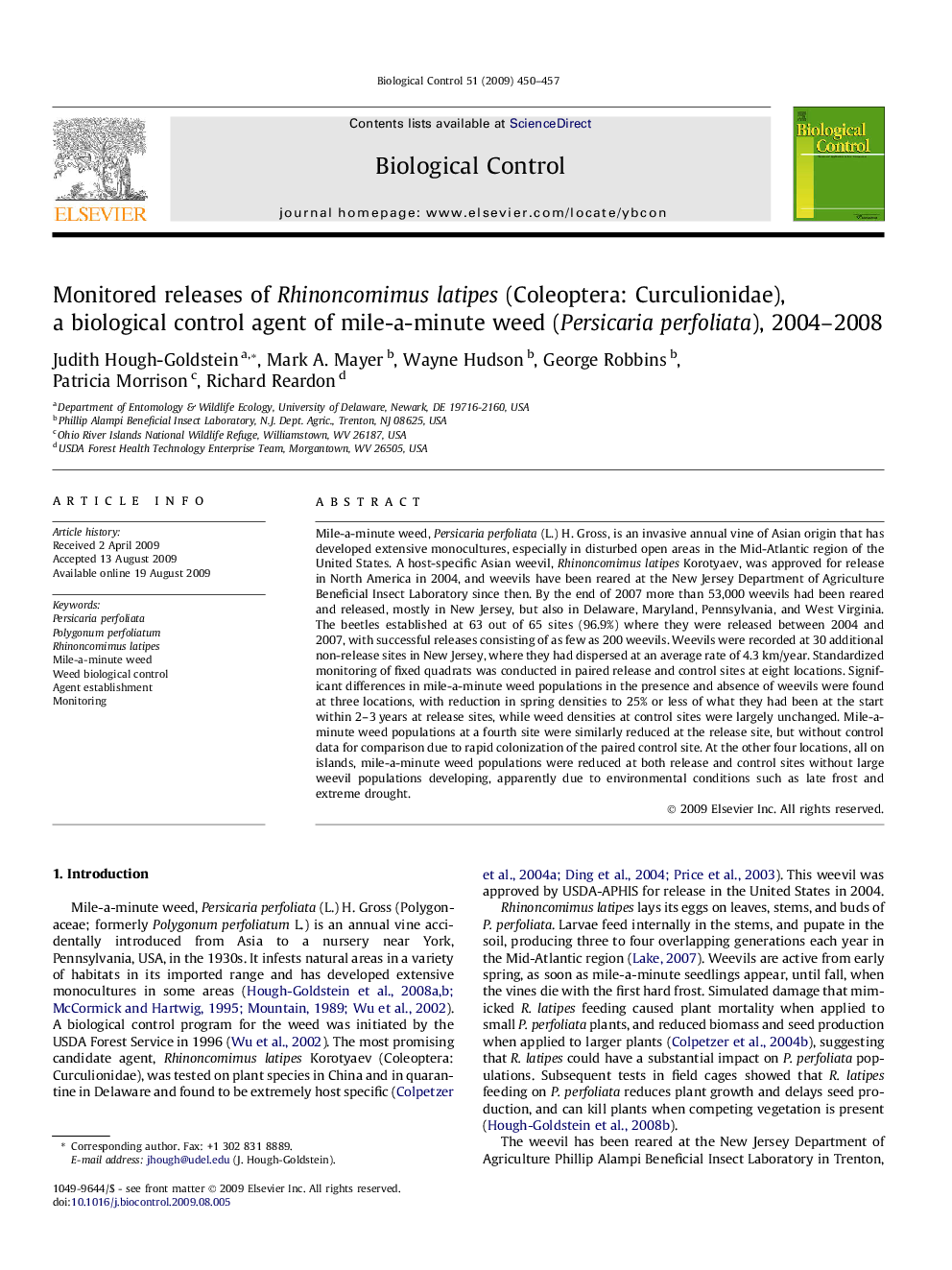| کد مقاله | کد نشریه | سال انتشار | مقاله انگلیسی | نسخه تمام متن |
|---|---|---|---|---|
| 4504548 | 1321098 | 2009 | 8 صفحه PDF | دانلود رایگان |
عنوان انگلیسی مقاله ISI
Monitored releases of Rhinoncomimus latipes (Coleoptera: Curculionidae), a biological control agent of mile-a-minute weed (Persicaria perfoliata), 2004-2008
دانلود مقاله + سفارش ترجمه
دانلود مقاله ISI انگلیسی
رایگان برای ایرانیان
کلمات کلیدی
موضوعات مرتبط
علوم زیستی و بیوفناوری
علوم کشاورزی و بیولوژیک
علوم زراعت و اصلاح نباتات
پیش نمایش صفحه اول مقاله

چکیده انگلیسی
Mile-a-minute weed, Persicaria perfoliata (L.) H. Gross, is an invasive annual vine of Asian origin that has developed extensive monocultures, especially in disturbed open areas in the Mid-Atlantic region of the United States. A host-specific Asian weevil, Rhinoncomimus latipes Korotyaev, was approved for release in North America in 2004, and weevils have been reared at the New Jersey Department of Agriculture Beneficial Insect Laboratory since then. By the end of 2007 more than 53,000 weevils had been reared and released, mostly in New Jersey, but also in Delaware, Maryland, Pennsylvania, and West Virginia. The beetles established at 63 out of 65 sites (96.9%) where they were released between 2004 and 2007, with successful releases consisting of as few as 200 weevils. Weevils were recorded at 30 additional non-release sites in New Jersey, where they had dispersed at an average rate of 4.3Â km/year. Standardized monitoring of fixed quadrats was conducted in paired release and control sites at eight locations. Significant differences in mile-a-minute weed populations in the presence and absence of weevils were found at three locations, with reduction in spring densities to 25% or less of what they had been at the start within 2-3Â years at release sites, while weed densities at control sites were largely unchanged. Mile-a-minute weed populations at a fourth site were similarly reduced at the release site, but without control data for comparison due to rapid colonization of the paired control site. At the other four locations, all on islands, mile-a-minute weed populations were reduced at both release and control sites without large weevil populations developing, apparently due to environmental conditions such as late frost and extreme drought.
ناشر
Database: Elsevier - ScienceDirect (ساینس دایرکت)
Journal: Biological Control - Volume 51, Issue 3, December 2009, Pages 450-457
Journal: Biological Control - Volume 51, Issue 3, December 2009, Pages 450-457
نویسندگان
Judith Hough-Goldstein, Mark A. Mayer, Wayne Hudson, George Robbins, Patricia Morrison, Richard Reardon,